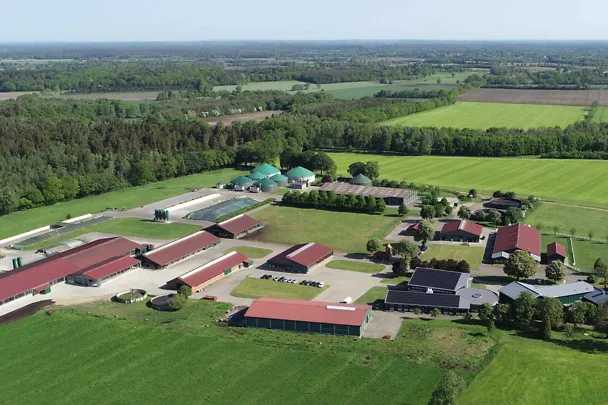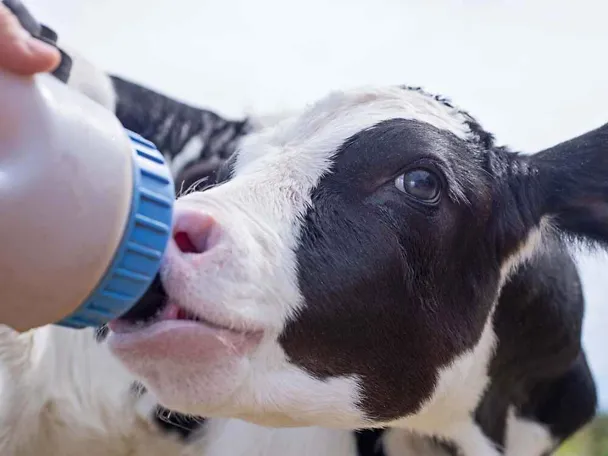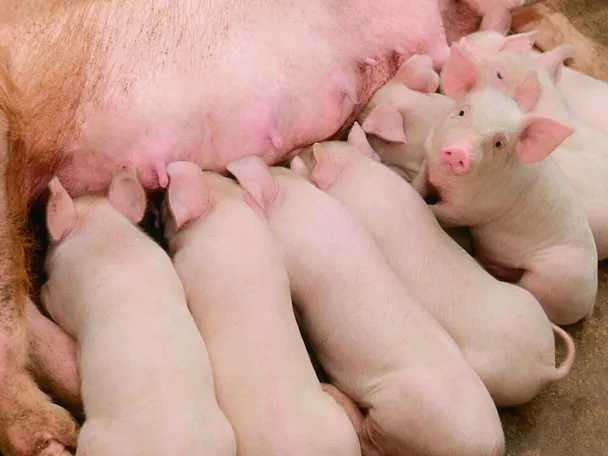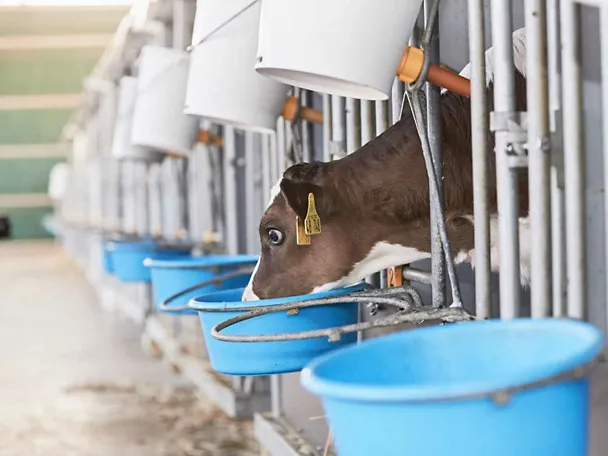Latest recommendations on feeding intensity for calves

Feeding regimes are very much specific to each farm. The duration and intensity of feeding vary depending on the farm size, equipment, housing conditions, labour availability and preference of the farm manager or herd manager. However, over the past few years, we’ve seen a trend towards longer feeding periods and larger feed quantities. The resulting benefits have been higher daily weight gains and greater vitality in the calves. On the other hand, this is accompanied by higher labour and management costs, not to mention the higher feed costs.
The quality and quantity of liquid feed are critical for performance
A calf's growth is heavily contingent on its supply of energy and protein. As such, the quality and quantity of liquid feed it receives is critical in order to fully exploit its high growth potential during the first few weeks of life. Over the past few years, studies have shown that nutrient quantities fed over and above the calculated requirement during the first few weeks of a calf's life – for example via ad lib feeding – lead to higher daily weight gains, a more stable immune system and improved performance during the first lactation.
The effect is known as metabolic programming. Even beyond the first 2–3 weeks of life, high quantities of liquid feed – i.e. 8 litres of whole milk or >1 kg of milk replacement per animal per day – lead to improved growth and a lower susceptibility to infection. When feeding such high quantities, the key is to use a high-quality milk replacement. Nutrients, especially sources of protein, must be easily digestible, otherwise they can cause digestive disorders. Therefore, the overall proportion of milk components, i.e. both skimmed milk powder and whey powder combined, must be at least 70%.
The effect is known as metabolic programming. Even beyond the first 2–3 weeks of life, high quantities of liquid feed – i.e. 8 litres of whole milk or >1 kg of milk replacement per animal per day – lead to improved growth and a lower susceptibility to infection. When feeding such high quantities, the key is to use a high-quality milk replacement. Nutrients, especially sources of protein, must be easily digestible, otherwise they can cause digestive disorders. Therefore, the overall proportion of milk components, i.e. both skimmed milk powder and whey powder combined, must be at least 70%.
What about liquid feeding for longer?
Numerous studies show that extending the liquid feeding duration to 12 weeks not only increases weight gains but also measurably reduces the post-weaning growth dip. This comes about when calves don’t consume enough supplementary feed to cover their daily nutrient requirements when weaning off milk. Naturally, the older the calves are when they're weaned, the higher their intake of supplementary feed. In contrast to increasing the daily liquid feed quantity, which does incur higher costs but can also be easily altered, extending the liquid feeding duration is often difficult to achieve. For example, if you were to extend your liquid feeding duration from 8 to 12 weeks, i.e. by 4 weeks, you would need 50% more cubicle capacity with access to a milk feeder. This equates to more work and even significant structural changes and expenses. As such, it requires an accurate assessment of the pros and cons, while ensuring that the needs of calves are prioritised at all times.
No growth dip in study
Two feeding regimes were compared as part of a project thesis at Gut Hülsenberg to pinpoint the effects of varying periods of liquid feeding in a practical setting. The control group was administered the standard liquid feeding regime applied at Gut Hülsenberg. The regime allows for a total liquid feeding duration of 8 weeks with ad lib feeding during the first 3 weeks. After the ad lib period, the calves receive 9 litres of KALBI MILCH TOP per day initially, at a concentration of 140 g per litre of water, then 7 litres per day at the same concentration up until their 6th week. Finally, during their 7th and 8th weeks they are weaned off (see. Fig. 1).
The test group, on the other hand, was supplied with milk for much longer. The ad lib phase was extended to 4 weeks. Then, up until the calves’ 8th week, they received a milk feed quantity of 9 litres per day, which equates to 1.26 kg of KALBI MILCH TOP. There then followed a 4-week weaning phase (see Fig. 2).
In the control group, the quantity of KALBI MILCH TOP used was 52–57 kg per calf, whereas in the test group with more intensive feeding, it was around 50% higher at 81–88 kg KALBI MILCH TOP per calf. As expected, the significantly higher milk quantities in the test group led to significantly higher daily weight gains.
During both the 8-week and the 12-week liquid feeding phase, the weight gains of both groups were similar, at approx. 800 g. The more intensively the calves were fed during the liquid feeding phase, however, the better their growth after weaning off milk (see Fig. 3). In fact, after the 12-week liquid feeding phase, there was no growth dip whatsoever.
Experience from Gut Hülsenberg
Despite the 12-week liquid feeding period having a positive effect, Götz Resenhoeft, Managing Director of Gut Hülsenberg, decided not to adopt the test feeding regime. Instead, he opted for a compromise that could be easily implemented on this farm (see Fig. 4). “In terms of housing capacity, increasing the liquid feeding duration to 12 weeks would be feasible. However, because we don’t have an automated feeding system, 12 weeks of liquid feeding would mean significantly more work and obviously higher costs for the milk replacement. So we decided to compromise at 10 weeks. We’ll keep the 4 weeks of ad lib feeding at the beginning, which we expect to enhance the performance of our heifers in the long term,” says Resenhoeft.



